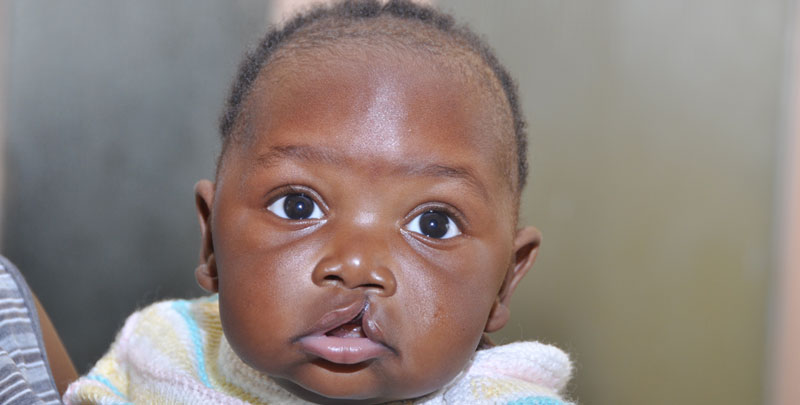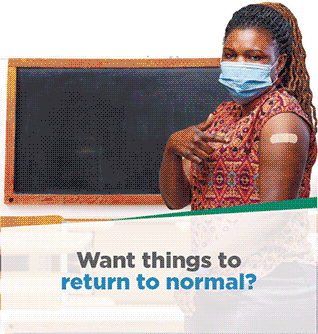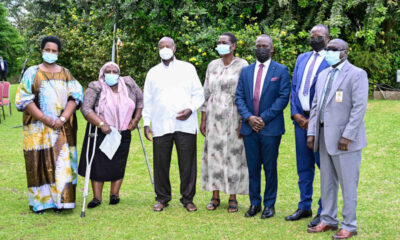Health
Cleft Lips and Palates: Facts, Myth, Mystery
For John Katwere Kigongo, 29, it was all joy, happiness and a blessing when his wife gave birth to twins. However, his excitement was cut short when his wife complained of the unfamiliar look on the face of one of the newly-born twins.
“While still in Kiboga for a family wedding feast, I received a phone call from my wife stating that she had delivered twins but one was not ok, I inquired if they were alive so I consoled her and told her to look after her as I found my way back to Kampala to meet my bundle of joy,” he said.
When he arrived at the hospital, he noted that one of the twins’ had an upper lip which looked like it was cut. In otherwords she had a cleft.
Two days later the couple was discharged from the hospital and returned to Mityana to take care of their new children, but their neighbours mocked them and started spreading rumours on how they came to have such a baby. They claimed that his wife had brought evil spirits into the family and accused his wife of using birth control pills.
Kigongo’s wife, Rachel Atuhirire, denied this. “I have never used birth control pills; and it was my first time to see a kid with a cleft lip,” she lamented.
Cleft lips and palates is a congenital deformation: many people in the village did not understand the situation.
Kigongo could not stomach the widespread mockery. He left his home with his daughter and headed for Mulago National Referral Hospital. He left Atuhitite at home to care for the other twin and the rest of their children.
“I was almost the only man at the Children’s Ward at Mulago. I lay on the cold floor of the ward for a full months of sleepless nights striving for my daughter’s condition to be rectified, “he said.
His prayers were answered. His daughter had a first of a number of operations in his five months’ moving up and down the stairs of Mulago Hospital. Sadly, he was terminated from his job for absconding from duty. As the sole bread-winner, it was a big blow yet he was grounded at the hospital.
“People often saw me struggle with my daughter. They pitied me and some offered me money, food and some basic items to use. Time came when I completely ran out of money and mortgaged my coffee plantation,” Kigongo moans.
After the third operation he returned home, almost seven months after the birth of his twins. It was a brutal twist in his life. “One doctor came from the operation room and tried raising conversation with me; a second doctor also unusually came in. During the conversation one of them asked me to be strong, I asked him over what? Minutes later he told me they did all they could but could not save my daughter, she had passed on,” Kigongo narrates.
There was little Kigongo could do to save his daughter’s life. Immediately, the hospital organized transport to take the dead body for burial.
Cleft Specialist Surgeon
After visiting and commiserating with the family deep in Tumbu village Mityana District on the loss of their little angel (Nakato Nambatya) as a result of cardiac arrest, this writer travelled to Community… (CoRSU) Hospital, in Kisubi, following an appointment with a medical expert, to clarify on the facts and myths of the cleft lip and palate.
There was a mother whose child had had a similar experience like that Kigongo had gone through. She had been saved from the pain and burden of living with a cleft lip and palate.
Joan Nantongo, a mother of four, said. “I almost jumped out through the hospital window, when I picked up my son to breast feed him and realized he had a deep unfamiliar cut on his mouth.
I had never seen something like that. I had an option of leaving him in the hospital but thought twice not to give doctors the burden so I carried him home but it was not easy.”
Dr. George William Galiwango, a Cleft Surgeon working at CoRSU’s Department of Plastic and Re-constructive Surgery, said cleft lips and palate’s is a congenital deformity whose real cause is not known but its closely linked to genetics.
It is a craniofacial anomaly and one of the most common birth defects. A cleft lip and/or palate can occur separately, although they are more likely to occur together early in pregnancy.
Cleft repair surgery is simple; and the transformation is instant with a surgical procedure that could take as little as 45 minutes. Whereas millions of children in Africa continue to live in shame and find difficulties eating, breathing and speaking as a result of unrepaired cleft lips and palates at CoRSU, cleft lips and palate reconstruction is being done free of charge owing to financial support from Smile Train East Africa, an international children’s charity.
“At CoRSU 250 cases are recorded annually but only 200 patients are treated. The balance is presumed to have medical complications that need further support,” Galiwango said. “Without corrective surgery, these children are condemned to a lifetime of isolation, suffering or even death, “he added.
Cleft lip repair is aimed at creating a contrast between the lip and external nose and provide good muscular continuity across the cleft without any scarring. It is usually performed from between three to six months of age. This is to allow the growth of the lip structure and assessment of the patient for the presence of comorbidities.
Feeding and malnutrition
Feeding for cleft lip and/or palate patients, especially in the newborns, comes with a lot of great concern and anxiety. Bartha Tendo Kyozaire, a nutritionist at CoRSU, expressed concern over malnutrition as a result of young mothers hiding their kids, or even deliberately starving them for the fear of the public seeing their deformed lips.
Poor feeding leads to poor growth and development in early infancy and these increases the burden of care. Caretakers need to know the basic food required for their children.
According to Kyozaire, an operation can only be conducted when the rate of weight gain of the child is above five kilogrammes. Thus, appropriate feeding techniques besides breast milk, like bottle-feeding, use of syringes and direct milking of mother’s breast in a cup or spoon, is paramount for the dietary need of the kid in question.
Speech Therapist
Duncan Musasizi, a B.Sc., Speech, Language and Swallowing Therapist for children and adults with feeding disorders and speech difficulties, says that there is always need for parents of kids with cleft lips and palates to seek the service of a qualified speech therapist for immediate reconstructive support.
He stressed that stigma related to bad speech and communication, like avoiding the children from speaking through their noses, needs to be checked if such children are to progress at school, or even be engaged in their community life.
Jane Ngige, the Programme Manager, Smile Train East Africa, says that they have been offering a sustainable approach to a single, solvable problem of cleft lips and palate by giving 100% free cleft repair surgery in Africa.
Ngige explains that about 700 to 800 cases in Kenya are worked on every year but the worst case scenarios are more in Ethiopia. The problem is due to ignorance or lack of care or both. She appealed to governments to have budgets such as they have for HIV/AIDS and/or malaria.
In Uganda, an estimated 1,300 children are born with cleft lip/palate each year. This is in addition to the backlog of patients that have not been treated yet, some even as old as 80 years.
From 2005 to-date over 8,110 patients have been supported to get free and safe surgeries through Smile Train, supported centers like; CoRSU Hospital in Kisubi, Uganda Burns and Prevention Service – Mulago, Surgical Centre – Mbarara and St. Catherine’s Clinic, Kampala. This contributes to over 60,000 cases across 30 African countries which have been supported by Smile Train.
The incidence of cleft lip and/or palate differs among races, ethnic groups and geographical areas. The prevalence of cleft lip and/or palate is highest in South American countries of Bolivia and Paraguay, followed by Asian countries of China and Japan. The overall worldwide prevalence is 7.9 per 10,000 births. Surprisingly the prevalence is lowest in African countries.
Comments




























